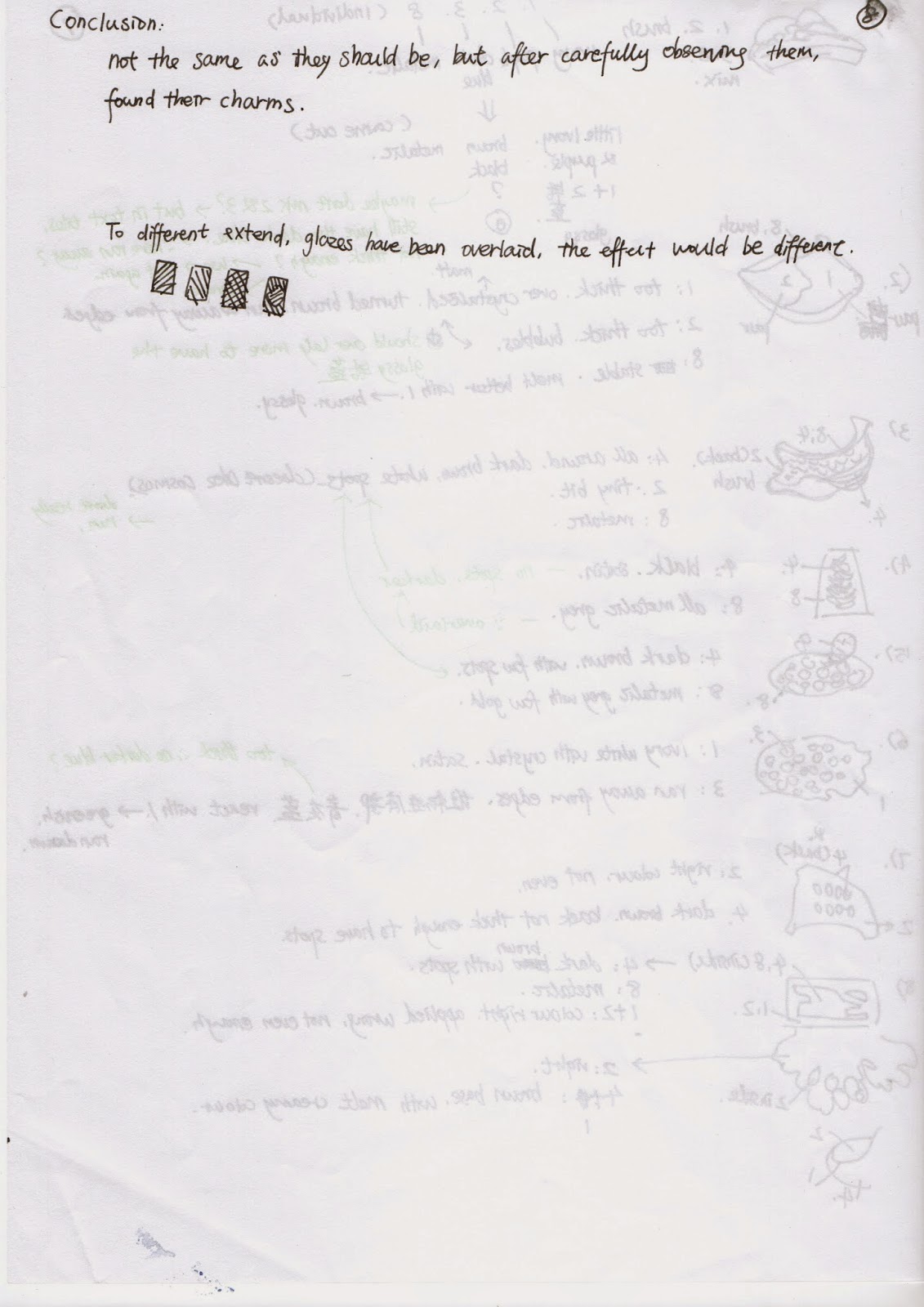1. Terracotta, 1080℃
 |
| first layer applied |
 |
| second layer applied |
2. Pink grog clay, 1260℃
 |
| 1, 1+2, 1+3, 1+4 |
 |
| 1+5/6/7/8 |
 |
| 2+1, 2, 2+3, 2+4 |
 |
| 2+5/6/7/8 |
 |
| 3+1, 3+2, 3, 3+4 |
 |
| 3+5/6/7/8 |
 |
| 4+1, 4+2, 4+3, 4 |
 |
| 4+5/6/7/8 |
 |
| 5+1/2/3/4 |
 |
| 5, 5+6/7/8 |
 |
| 6+1/2/3/4 |
 |
| 6+5, 6, 6+7/8 |
 |
| 7+1/2/3/4 |
 |
| 7+5/6, 7 , 7+8 |
 |
| 8+1/2/3/4 |
 |
| 8+5/6/7, 8 |
3. Random combination test
3. More complex form
These are some test pieces made long time ago, used to test how glazes react on different forms.
The test result of 1 and 2 are fine. The original colour of glazes showed better in 1080℃ firing, except the 2 SW glazes. Their colour became much darker in 1260 firing, and appeared other feature. However, because the flux of the glazes were more active in 1260, the colour turned out more vivid.
On the other hand, I am not satisfied with the result of 3. Most of the glazes I bought are for brush painting, so they are pretty thick. I did not have a good control of the thickness, which partly cause the odd outcome. And for one glaze, I didn't except it will change so much. The website I bought it from showed it should be black with small white spots. When it was fired here, it became brown with fewer almost vanishing spots. And I used quite a lot of this glaze on test 3, which made almost all of them look like has been burnt.
Anyway, I will do more tests before I glaze the triangular objects.




















































No comments:
Post a Comment